Hello all. know a number of you have had some experience with Topaz - can you tell me how you use it? is the Denoise in Photo AI or the Classic (standalone) version better? I don't think I can get a license for the standalone version because it's been discontinued. I'm still trying to piece together this puzzle about Bray Fall's Denoising method; I know Topaz Denoise is involved (for sure) and possibly Photoshop, but that's all I know. I don't know what can be done in Photoshop regarding denoise (I tried many things, but all the denoise tools in there are horrible); but if someone can tell me if there is some "secret" method in there, I would appreciate it my main question is, can someone piece together a guide on a simple workflow with Photo AI? what sliders to touch and how much of them? after or before Starnet? apply Denoise once or more than once? to sum it all up, my real core question, the root of my never-ending curiosity is, I want to know how to turn things like this: 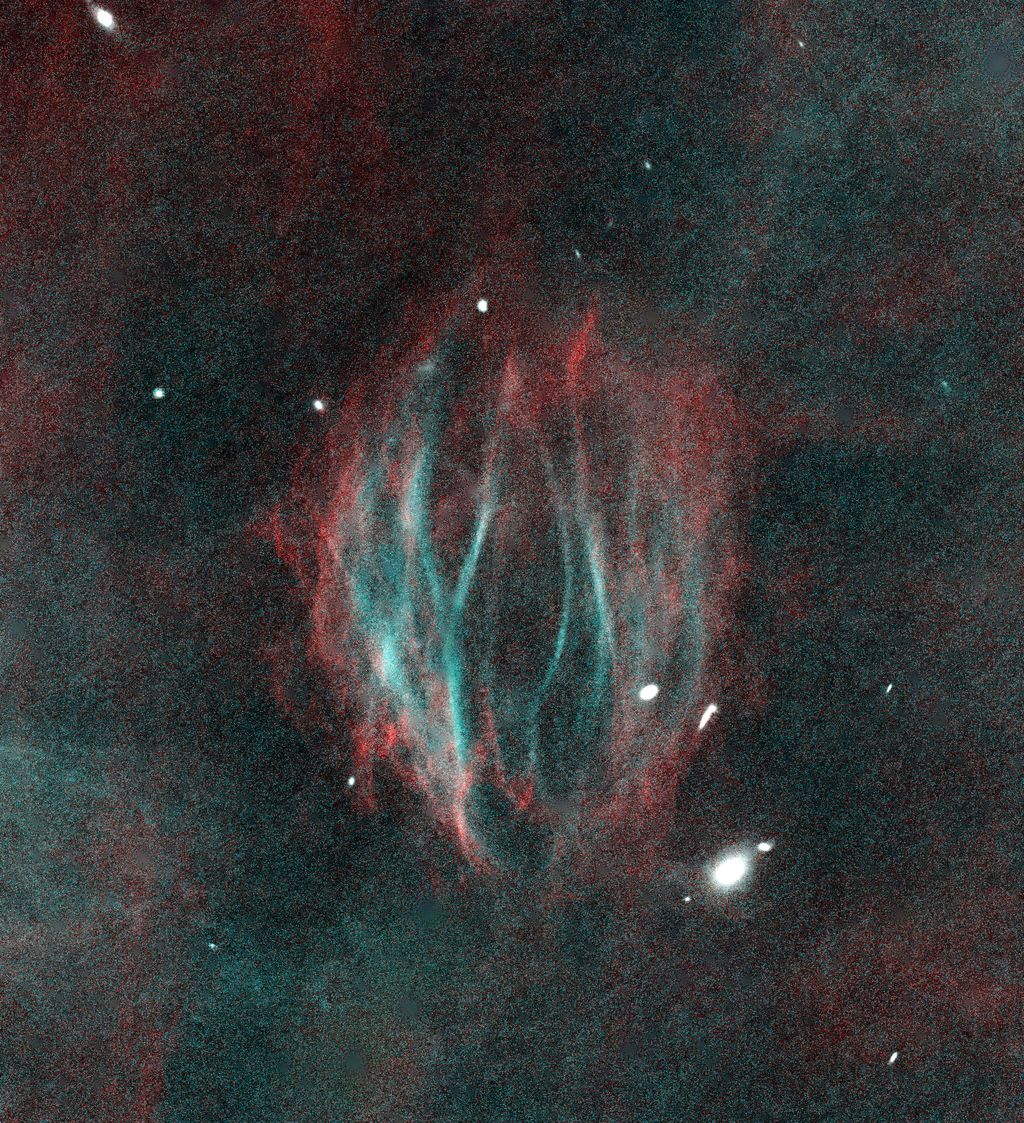 into this. like, WTH? how is this possible?: also, doesn't it seem like the background OIII was turned into IFN? or maybe his example (above) was just of HOO, idk. 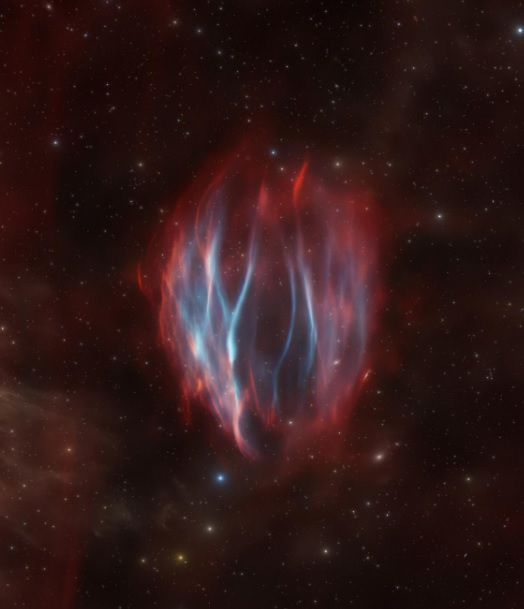 (screenshot crop, credit: Bray Falls - Goblet of Fire nebula) also, his stars look very similar in all his images, which makes me think that this is part of some sort of specific PI or Photoshop workflow (or/and AI software) that he repeatedly uses on all his datasets. I did get the free trial of Denoise AI (the old standalone version), and did experiment with it with Bray's raw starless Jpeg data (top image), to try to replicate his final result, although Topaz did a very good job removing noise, I could never get the amount of detail and smoothness shown in his final image. I tried my best to express my thoughts I would appreciate any advice, guides, or anything at all; what do you do for denoising faint objects, once you've already gotten a lot of integration and can't add more? NXT wouldn't handle the type of noisy data shown at the top, that's for sure; it's gonna be all mottled up. CS, Oscar
|
You cannot like this item. Reason: "ANONYMOUS".
You cannot remove your like from this item.
Editing a post is only allowed within 24 hours after creating it.
You cannot Like this post because the topic is closed.
Copy the URL below to share a direct link to this post.
This post cannot be edited using the classic forums editor.
To edit this post, please enable the "New forums experience" in your settings.
I have the old version of Topaz and it's a very powerful tool and like all powerful tools you need to use it carefully. It can do wonders but it LOVES to create artifacts to the point of making up detail that doesn't exist. I don't use it much anymore as I find the denoise modeling in Graxpert and Affinity photo to be more generally useful. What is interesting to me is how powerful these tools have become. I recently went back into some old data to answer the question for myself which was, how short a stack could I have that would replicate the quality of the full stack. What I learned is that you can come pretty close to making a 30 min stack look as good as a 4 hour one if you really work at it. Sure there were differences in the very faintest detail but then again, the short stack was sharper (lower FWHM). It really teaches you a lot when you are forced to go right up against the wall in your processing, that's for sure.
|
You cannot like this item. Reason: "ANONYMOUS".
You cannot remove your like from this item.
Editing a post is only allowed within 24 hours after creating it.
You cannot Like this post because the topic is closed.
Copy the URL below to share a direct link to this post.
This post cannot be edited using the classic forums editor.
To edit this post, please enable the "New forums experience" in your settings.
You could use Deep SNR which needs three channels. The trick with just one is to split it into three sets and apply Deep SNR pretending they are individual channels. Note - the three sets need to be uncorrelated, so you cannot just duplicate (or triplicate) one set.
|
You cannot like this item. Reason: "ANONYMOUS".
You cannot remove your like from this item.
Editing a post is only allowed within 24 hours after creating it.
You cannot Like this post because the topic is closed.
Copy the URL below to share a direct link to this post.
This post cannot be edited using the classic forums editor.
To edit this post, please enable the "New forums experience" in your settings.
If it's Drizzled data try DeepSNR @ .9 strength.
|
You cannot like this item. Reason: "ANONYMOUS".
You cannot remove your like from this item.
Editing a post is only allowed within 24 hours after creating it.
You cannot Like this post because the topic is closed.
Copy the URL below to share a direct link to this post.
This post cannot be edited using the classic forums editor.
To edit this post, please enable the "New forums experience" in your settings.
even DeepSNR is not strong enough for Bray's data
but thanks for mentioning about it
|
You cannot like this item. Reason: "ANONYMOUS".
You cannot remove your like from this item.
Editing a post is only allowed within 24 hours after creating it.
You cannot Like this post because the topic is closed.
Copy the URL below to share a direct link to this post.
This post cannot be edited using the classic forums editor.
To edit this post, please enable the "New forums experience" in your settings.
You apply DeepSNR before stretching the image in a linear state, it probably isnt working cause you're using it on an extraordinarily pushed dataset, which it can only correct for so much noise.
|
You cannot like this item. Reason: "ANONYMOUS".
You cannot remove your like from this item.
Editing a post is only allowed within 24 hours after creating it.
You cannot Like this post because the topic is closed.
Copy the URL below to share a direct link to this post.
This post cannot be edited using the classic forums editor.
To edit this post, please enable the "New forums experience" in your settings.
Oscar:
Hello all.
know a number of you have had some experience with Topaz - can you tell me how you use it? is the Denoise in Photo AI or the Classic (standalone) version better? I don't think I can get a license for the standalone version because it's been discontinued.
I'm still trying to piece together this puzzle about Bray Fall's Denoising method; I know Topaz Denoise is involved (for sure) and possibly Photoshop, but that's all I know.
I don't know what can be done in Photoshop regarding denoise (I tried many things, but all the denoise tools in there are horrible); but if someone can tell me if there is some "secret" method in there, I would appreciate it
my main question is, can someone piece together a guide on a simple workflow with Photo AI? what sliders to touch and how much of them? after or before Starnet? apply Denoise once or more than once?
to sum it all up, my real core question, the root of my never-ending curiosity is, I want to know how to turn things like this:

into this. like, WTH? how is this possible?:
also, doesn't it seem like the background OIII was turned into IFN? or maybe his example (above) was just of HOO, idk.

(screenshot crop, credit: Bray Falls - Goblet of Fire nebula)
also, his stars look very similar in all his images, which makes me think that this is part of some sort of specific PI or Photoshop workflow (or/and AI software) that he repeatedly uses on all his datasets.
I did get the free trial of Denoise AI (the old standalone version), and did experiment with it with Bray's raw starless Jpeg data (top image), to try to replicate his final result, although Topaz did a very good job removing noise, I could never get the amount of detail and smoothness shown in his final image.
I tried my best to express my thoughts
I would appreciate any advice, guides, or anything at all; what do you do for denoising faint objects, once you've already gotten a lot of integration and can't add more? NXT wouldn't handle the type of noisy data shown at the top, that's for sure; it's gonna be all mottled up.
CS,
Oscar You're not the first person to try and figure out how these images are processed. I think a majority of the community would like to hear specifics from @Bray Falls and his team about these processing decisions. It does look like the O3 signal got turned into IFN there. But really only Bray can answer what methods were used. And just a word of caution, I myself have seen similar processing remove and alter real structure/signal in a way that is not true to the original data. In this specific case the obvious O3 data turning into brownish IFN, and in another case (not from Bray, but similar processing, actual structure was removed that was in both the Ha and O3 data). Something seems to be "afoot" and the lack of transparency surrounding it only leads to more uncertainty. Basically it looks like an iterative process of extreme noise reduction and structure highlight enhancement. There isn't a standalone tool that will do that in one pass. So, likely you will have to majorly noise reduce, then recover the most detail you can and then do it again. Something like that. I am just as curious as you are, so I hope Bray will follow up. CS! Joe
|
You cannot like this item. Reason: "ANONYMOUS".
You cannot remove your like from this item.
Editing a post is only allowed within 24 hours after creating it.
You cannot Like this post because the topic is closed.
Copy the URL below to share a direct link to this post.
This post cannot be edited using the classic forums editor.
To edit this post, please enable the "New forums experience" in your settings.
What you're missing here about the IFN is the continuum leakage in narrowband filters.
I assume that the raw HOO Bray posted is before continuum subtraction, so what you're seeing is not all OIII, but also dust that is visible in the OIII band.
After continuum subtraction there'll be no dust in the OIII and the dust will be enhanced separately with RGB/LRGB processing (hence the brown color).
|
You cannot like this item. Reason: "ANONYMOUS".
You cannot remove your like from this item.
Editing a post is only allowed within 24 hours after creating it.
You cannot Like this post because the topic is closed.
Copy the URL below to share a direct link to this post.
This post cannot be edited using the classic forums editor.
To edit this post, please enable the "New forums experience" in your settings.
Daniele Borsari:
What you're missing here about the IFN is the continuum leakage in narrowband filters.
I assume that the raw HOO Bray posted is before continuum subtraction, so what you're seeing is not all OIII, but also dust that is visible in the OIII band.
After continuum subtraction there'll be no dust in the OIII and the dust will be enhanced separately with RGB/LRGB processing (hence the brown color). The point of this thread isn't necessarily the O3 to IFN, which when viewing the data, looks like a creative choice to refuse to highlight the O3 emission surrounding the main PN. That is just an example of interesting processing decisions that would be nice to hear about from bray. The point of the thread is the Noise Reduction. That is what OP is interested in. Regards, Joe
|
You cannot like this item. Reason: "ANONYMOUS".
You cannot remove your like from this item.
Editing a post is only allowed within 24 hours after creating it.
You cannot Like this post because the topic is closed.
Copy the URL below to share a direct link to this post.
This post cannot be edited using the classic forums editor.
To edit this post, please enable the "New forums experience" in your settings.
In the end, I’d question whether the tool that takes the first image data and makes that second image possible can legitimately be termed noise reduction. In all these cases, there has to be some validation that what results is truly real and not just a pretty picture. Similar questions were raised about Topaz AI. BlurX and NoiseX have largely gained acceptance on the basis of being trained on astronomical data.
|
You cannot like this item. Reason: "ANONYMOUS".
You cannot remove your like from this item.
Editing a post is only allowed within 24 hours after creating it.
You cannot Like this post because the topic is closed.
Copy the URL below to share a direct link to this post.
This post cannot be edited using the classic forums editor.
To edit this post, please enable the "New forums experience" in your settings.
I agree, Honestly when comparing the data with Marcels data, there are some discrepancies. I am just assuming that with the amount of Noise Reduction that needed to be done affected the data. But that is just a guess. Here is a aligned comparison: Bray_Marcel_Gobletcomparison.mp4 |
You cannot like this item. Reason: "ANONYMOUS".
You cannot remove your like from this item.
Editing a post is only allowed within 24 hours after creating it.
You cannot Like this post because the topic is closed.
Copy the URL below to share a direct link to this post.
This post cannot be edited using the classic forums editor.
To edit this post, please enable the "New forums experience" in your settings.
I use noiseXTerminator, obviosly with mask and i think it does a good job.
|
You cannot like this item. Reason: "ANONYMOUS".
You cannot remove your like from this item.
Editing a post is only allowed within 24 hours after creating it.
You cannot Like this post because the topic is closed.
Copy the URL below to share a direct link to this post.
This post cannot be edited using the classic forums editor.
To edit this post, please enable the "New forums experience" in your settings.
Joseph Biscoe IV:
I think a majority of the community would like to hear specifics from @Bray Falls and his team about these processing decisions. You're right, a large majority I doubt Bray Falls or Marcel are ever going to say anything about how they do it I even doubt they will give an explanation as to why they wont say anything I know because I PMed them I PMed Marcel 22 days ago, Mathew Ludgate 7 days ago (collaborator), and Bray sometime before Marcel, although I don't know when exactly that was done because the "discussion" was deleted out of frustration there was no "discussion" anyway, they didn't say one single word to me after I almost begged them with more than one moderately long PM it's possible Bray and Marcel and Mathew all are maybe PMing each other and possibly thought my messages were part of their own and maybe just cleared the PMs from the notifications without being opened, but I doubt it I doubt it because other people have also asked about the denoise technique and were only indirectly and vaguely answered or ignored
|
You cannot like this item. Reason: "ANONYMOUS".
You cannot remove your like from this item.
Editing a post is only allowed within 24 hours after creating it.
You cannot Like this post because the topic is closed.
Copy the URL below to share a direct link to this post.
This post cannot be edited using the classic forums editor.
To edit this post, please enable the "New forums experience" in your settings.
I'd say that Bray Falls, Marcel Drechsler et al. are entitled to keep their original processing methods private, if they so wish. Or sell them as processing courses. It's their business.
That said, striving to preserve data integrity is the proper way to do this, as far as I'm concerned, but we do compromise on this to create aesthetically pleasing images. It's not science, most of us want to make pretty pictures. Noise reduction on very faint targets will affect data, there's just no way around this, when you're on the bleeding edge of SNR. Some details will fade but some non-existent features can also pop up. Hard to distinguish them, when there's no reference image.
I use a bit of everything (NX, TopazDenoise sans AI "sharpening", CameraRaw, Dust and Scratches, etc).
|
You cannot like this item. Reason: "ANONYMOUS".
You cannot remove your like from this item.
Editing a post is only allowed within 24 hours after creating it.
You cannot Like this post because the topic is closed.
Copy the URL below to share a direct link to this post.
This post cannot be edited using the classic forums editor.
To edit this post, please enable the "New forums experience" in your settings.
If the goal is simply to make aesthetically pleasing images, we can simply give our data to some AI program and ask it to go wild. Or dispense with the data altogether and have the AI program do all the work. No, we aren’t doing science. But I’d like to think we are dealing with something that has some verifiable and meaningful link to reality. But I am not sure that many people care any more so long as the images get the appropriate social appreciation.
|
You cannot like this item. Reason: "ANONYMOUS".
You cannot remove your like from this item.
Editing a post is only allowed within 24 hours after creating it.
You cannot Like this post because the topic is closed.
Copy the URL below to share a direct link to this post.
This post cannot be edited using the classic forums editor.
To edit this post, please enable the "New forums experience" in your settings.
I'm not sure if it's covered, but Bray has a processing guide. He also hosts private workshops. Both too expensive for me, but might address the concerns in this thread about his techniques. As for the noise reduction, I used to stand by NoiseXterminator, but now exclusively use Graxpert denoise. Technique: use a main and duplicate image. Do iterative NR in the linear phase, going as far as the data allows (but also without overly softening the data. Just enough to smooth out the grain). Then stretch however you like (STF stretch, histo, GHS). Then, in the duplicate image, you can process the stars and add them to the main.
|
You cannot like this item. Reason: "ANONYMOUS".
You cannot remove your like from this item.
Editing a post is only allowed within 24 hours after creating it.
You cannot Like this post because the topic is closed.
Copy the URL below to share a direct link to this post.
This post cannot be edited using the classic forums editor.
To edit this post, please enable the "New forums experience" in your settings.
I have Topaz Photo AI. I absolutely would not use it for astrophotos… it very easily misinterprets faint stars as noise and noise as faint stars. And it hallucinates background texture. I'm sure you can fine-tune the parameters to avoid most of the artifacts, but IMO, at that point, the denoising performance isn't nearly as good as other noise reduction methods (noisex, deepsnr).
Works great for traditional photography, though. Just seems to not be trained on deep sky pics.
If any of y'all have some astrophotos you want to see ran through Topaz, I can do a couple for demonstration.
|
You cannot like this item. Reason: "ANONYMOUS".
You cannot remove your like from this item.
Editing a post is only allowed within 24 hours after creating it.
You cannot Like this post because the topic is closed.
Copy the URL below to share a direct link to this post.
This post cannot be edited using the classic forums editor.
To edit this post, please enable the "New forums experience" in your settings.
Noah Tingey:
I have Topaz Photo AI. I absolutely would not use it for astrophotos... it very easily misinterprets faint stars as noise and noise as faint stars. And it hallucinates background texture. I'm sure you can fine-tune the parameters to avoid most of the artifacts, but IMO, at that point, the denoising performance isn't nearly as good as other noise reduction methods (noisex, deepsnr).
Works great for traditional photography, though. Just seems to not be trained on deep sky pics.
If any of y'all have some astrophotos you want to see ran through Topaz, I can do a couple for demonstration. Thank you I have this crop of WR16 data Starless is pre-stretched, which is HaRGB, and RGB Stars are linear https://filebin.net/67s0sj0iau04q7kk |
You cannot like this item. Reason: "ANONYMOUS".
You cannot remove your like from this item.
Editing a post is only allowed within 24 hours after creating it.
You cannot Like this post because the topic is closed.
Copy the URL below to share a direct link to this post.
This post cannot be edited using the classic forums editor.
To edit this post, please enable the "New forums experience" in your settings.
Markice Stephenson:
I'm not sure if it's covered, but Bray has a processing guide. He also hosts private workshops. Both too expensive for me, but might address the concerns in this thread about his techniques. As for the noise reduction, I used to stand by NoiseXterminator, but now exclusively use Graxpert denoise. Technique: use a main and duplicate image. Do iterative NR in the linear phase, going as far as the data allows (but also without overly softening the data. Just enough to smooth out the grain). Then stretch however you like (STF stretch, histo, GHS). Then, in the duplicate image, you can process the stars and add them to the main. I would agree, Graxpert denoise is my goto in most cases.
|
You cannot like this item. Reason: "ANONYMOUS".
You cannot remove your like from this item.
Editing a post is only allowed within 24 hours after creating it.
You cannot Like this post because the topic is closed.
Copy the URL below to share a direct link to this post.
This post cannot be edited using the classic forums editor.
To edit this post, please enable the "New forums experience" in your settings.
Oscar:
Noah Tingey:
I have Topaz Photo AI. I absolutely would not use it for astrophotos... it very easily misinterprets faint stars as noise and noise as faint stars. And it hallucinates background texture. I'm sure you can fine-tune the parameters to avoid most of the artifacts, but IMO, at that point, the denoising performance isn't nearly as good as other noise reduction methods (noisex, deepsnr).
Works great for traditional photography, though. Just seems to not be trained on deep sky pics.
If any of y'all have some astrophotos you want to see ran through Topaz, I can do a couple for demonstration.
Thank you
I have this crop of WR16 data
Starless is pre-stretched, which is HaRGB, and RGB Stars are linear
https://filebin.net/67s0sj0iau04q7kk Not a very careful stretch, but a look into what Graxpert can do with the noise 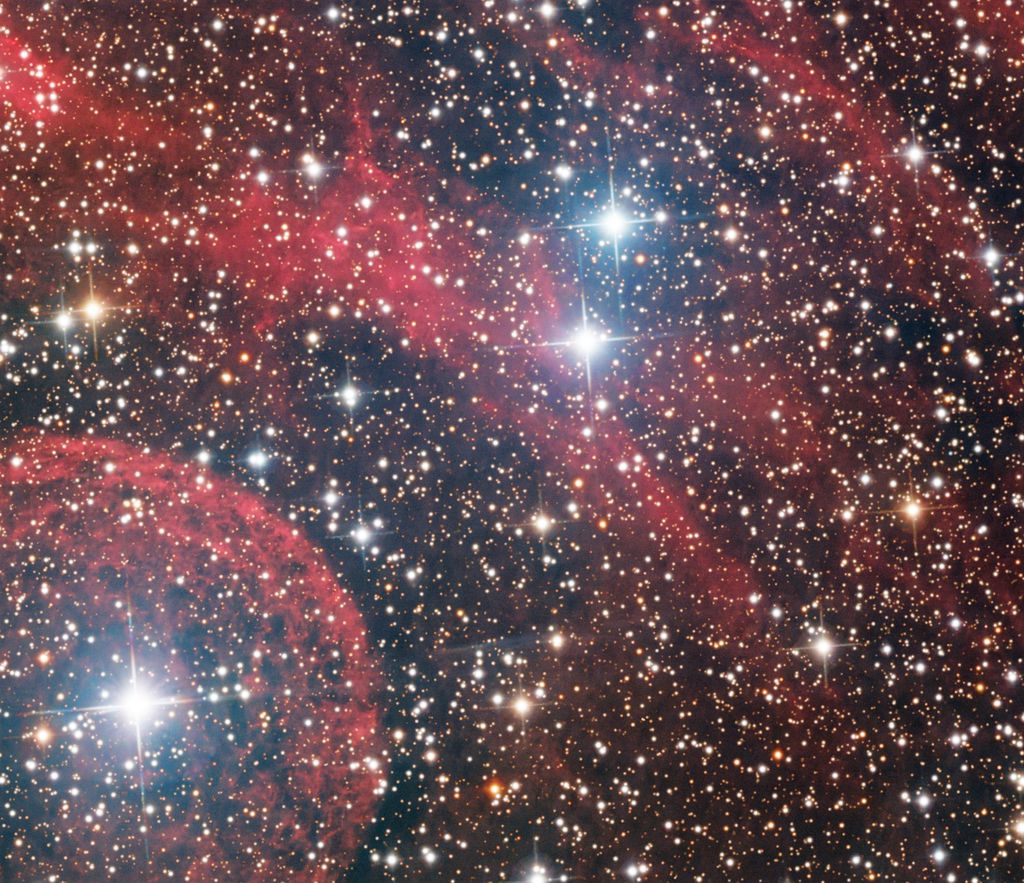 |
You cannot like this item. Reason: "ANONYMOUS".
You cannot remove your like from this item.
Editing a post is only allowed within 24 hours after creating it.
You cannot Like this post because the topic is closed.
Copy the URL below to share a direct link to this post.
This post cannot be edited using the classic forums editor.
To edit this post, please enable the "New forums experience" in your settings.
not bad
the stretch intensity was done on purpose; a simple downward facing curve can reduce the stretch anyway (assuming you're talking about the starless)
I also tried DeepSNR with it and was actually surprised with the results - I'll probably use that more often than any other denoise software
but I still want to see what Topaz does
|
You cannot like this item. Reason: "ANONYMOUS".
You cannot remove your like from this item.
Editing a post is only allowed within 24 hours after creating it.
You cannot Like this post because the topic is closed.
Copy the URL below to share a direct link to this post.
This post cannot be edited using the classic forums editor.
To edit this post, please enable the "New forums experience" in your settings.
Oscar:
not bad
the stretch intensity was done on purpose; a simple downward facing curve can reduce the stretch anyway (assuming you're talking about the starless)
I also tried DeepSNR with it and was actually surprised with the results - I'll probably use that more often than any other denoise software
but I still want to see what Topaz does I worded my post poorly. I meant that I had stretched the data loosely on my end and that you would likely get a better result!
|
You cannot like this item. Reason: "ANONYMOUS".
You cannot remove your like from this item.
Editing a post is only allowed within 24 hours after creating it.
You cannot Like this post because the topic is closed.
Copy the URL below to share a direct link to this post.
This post cannot be edited using the classic forums editor.
To edit this post, please enable the "New forums experience" in your settings.
Oscar:
Noah Tingey:
I have Topaz Photo AI. I absolutely would not use it for astrophotos... it very easily misinterprets faint stars as noise and noise as faint stars. And it hallucinates background texture. I'm sure you can fine-tune the parameters to avoid most of the artifacts, but IMO, at that point, the denoising performance isn't nearly as good as other noise reduction methods (noisex, deepsnr).
Works great for traditional photography, though. Just seems to not be trained on deep sky pics.
If any of y'all have some astrophotos you want to see ran through Topaz, I can do a couple for demonstration.
Thank you
I have this crop of WR16 data
Starless is pre-stretched, which is HaRGB, and RGB Stars are linear
https://filebin.net/67s0sj0iau04q7kk Unedited, for reference: 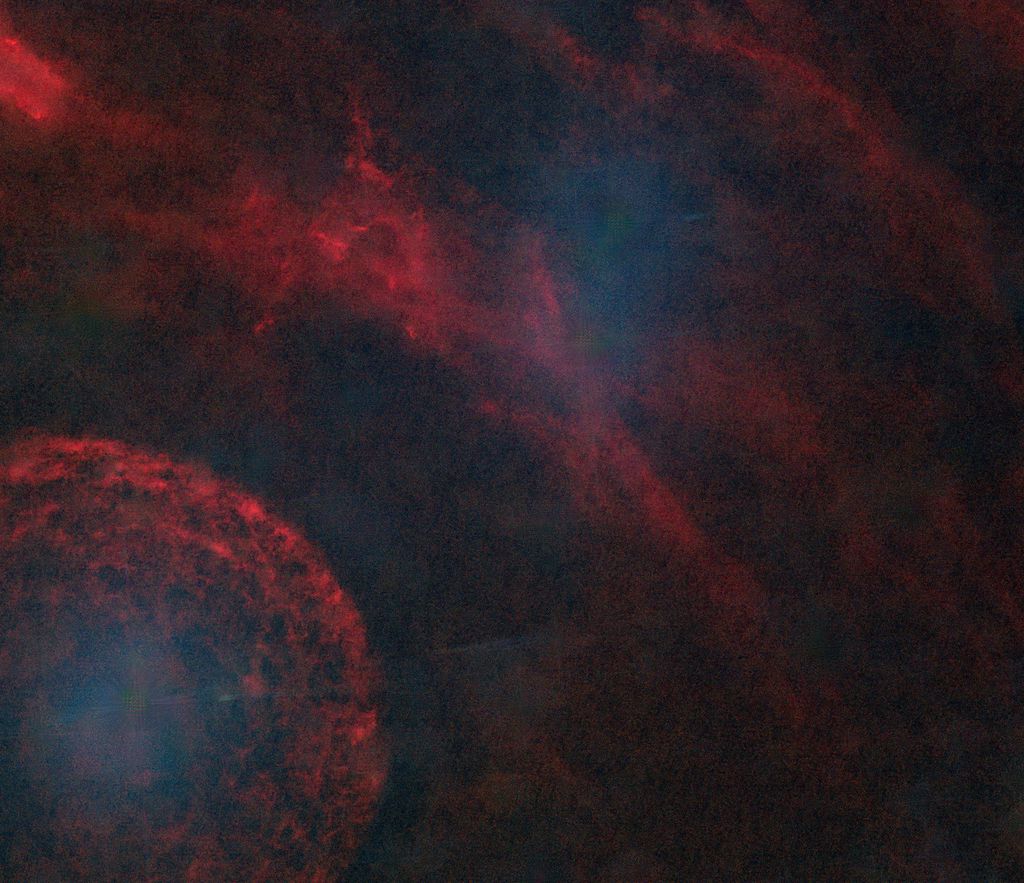 On the "Normal" denoise preset: 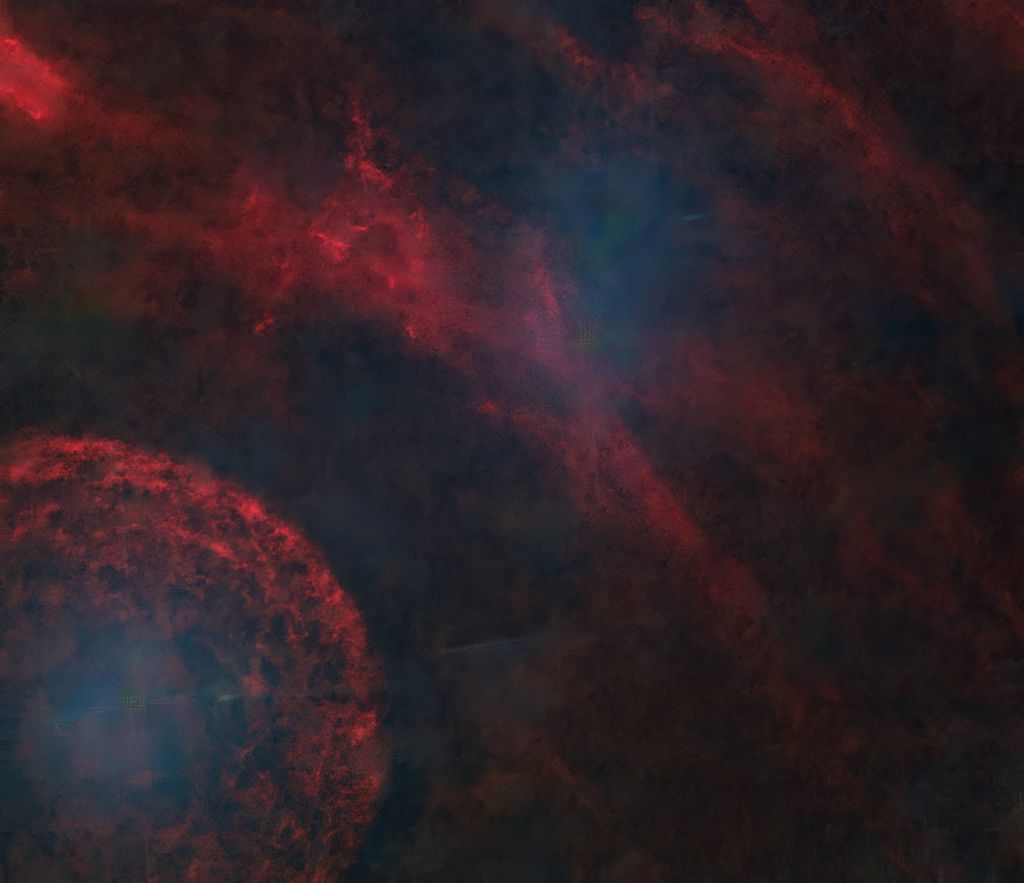 On "Strong" (which is what their algorithmically determined recommendation was): 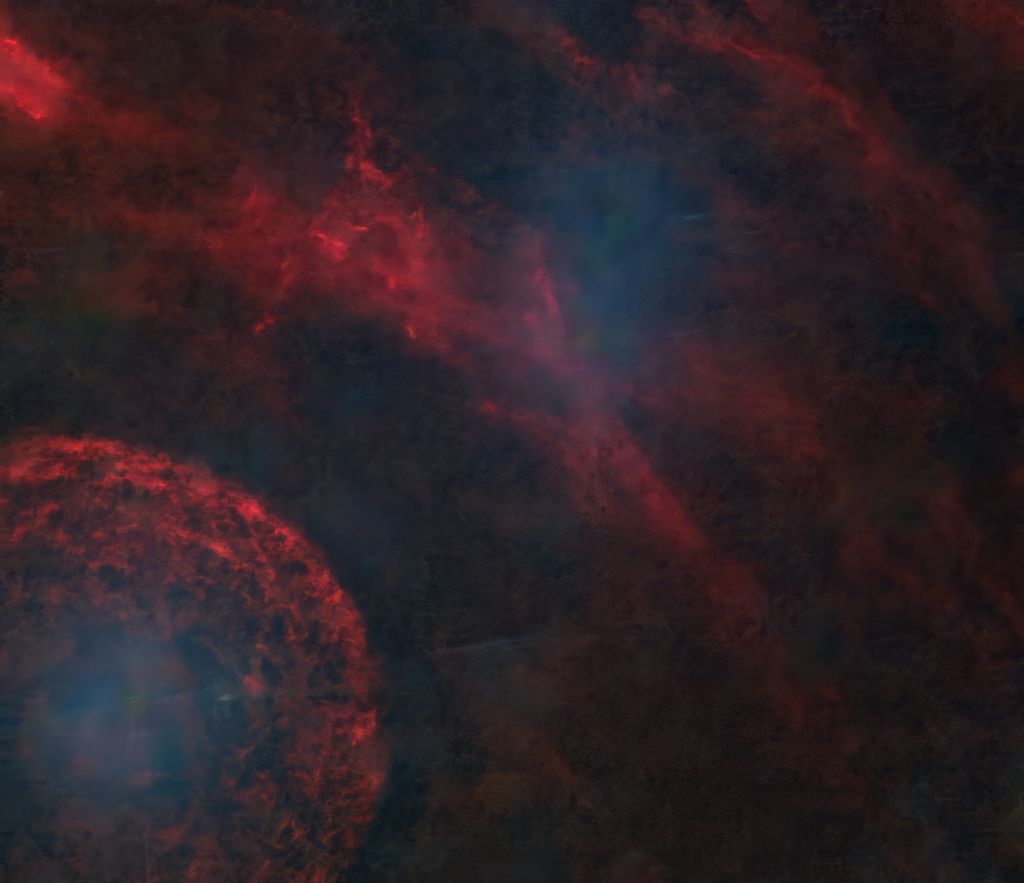 And "Extreme": 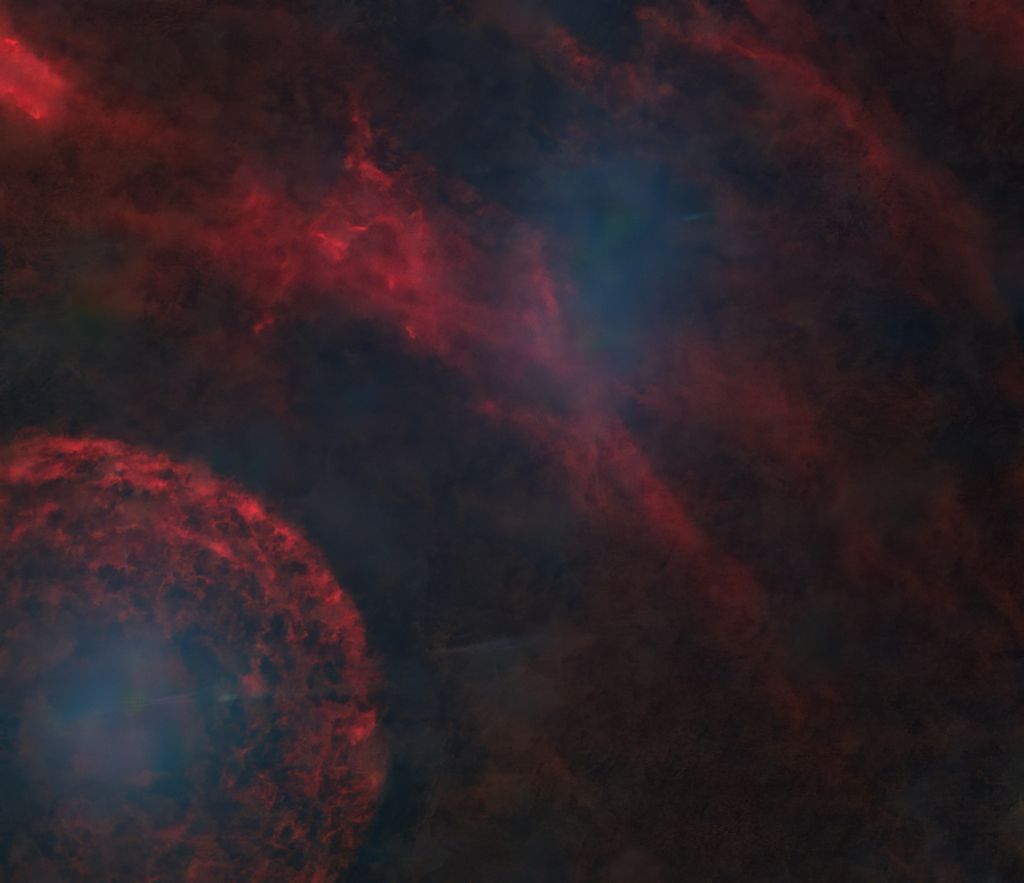 I pulled up some other examples that I'll post in a sec.
|
You cannot like this item. Reason: "ANONYMOUS".
You cannot remove your like from this item.
Editing a post is only allowed within 24 hours after creating it.
You cannot Like this post because the topic is closed.
Copy the URL below to share a direct link to this post.
This post cannot be edited using the classic forums editor.
To edit this post, please enable the "New forums experience" in your settings.
Here's some more examples of Topaz at work. Left half of the image is the original image. Right half is denoised. This is the low, strong, and extreme preset, respectively. These images are zoomed 1:1. 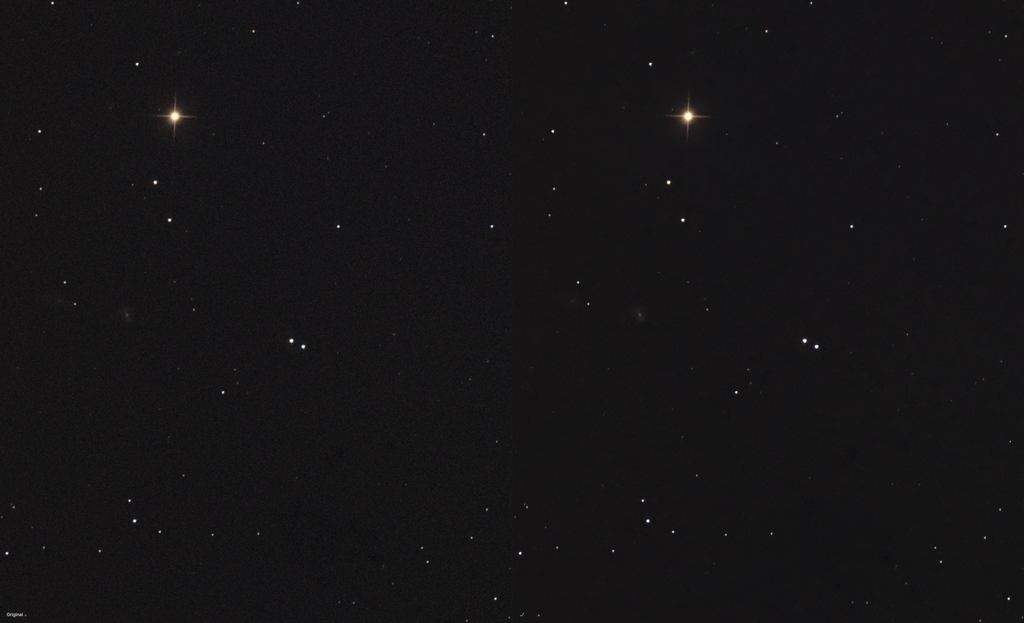 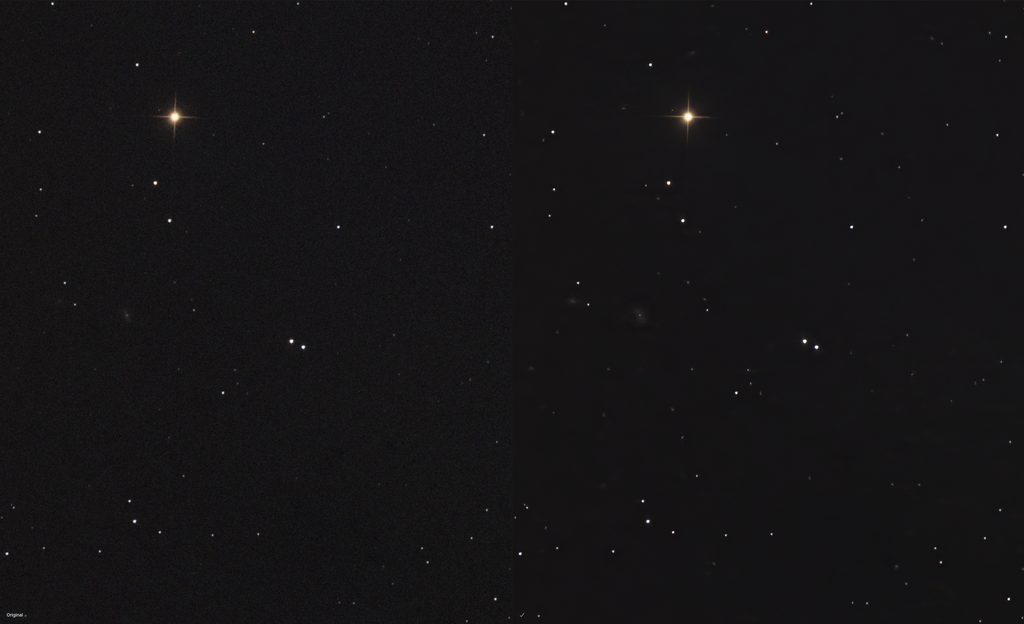 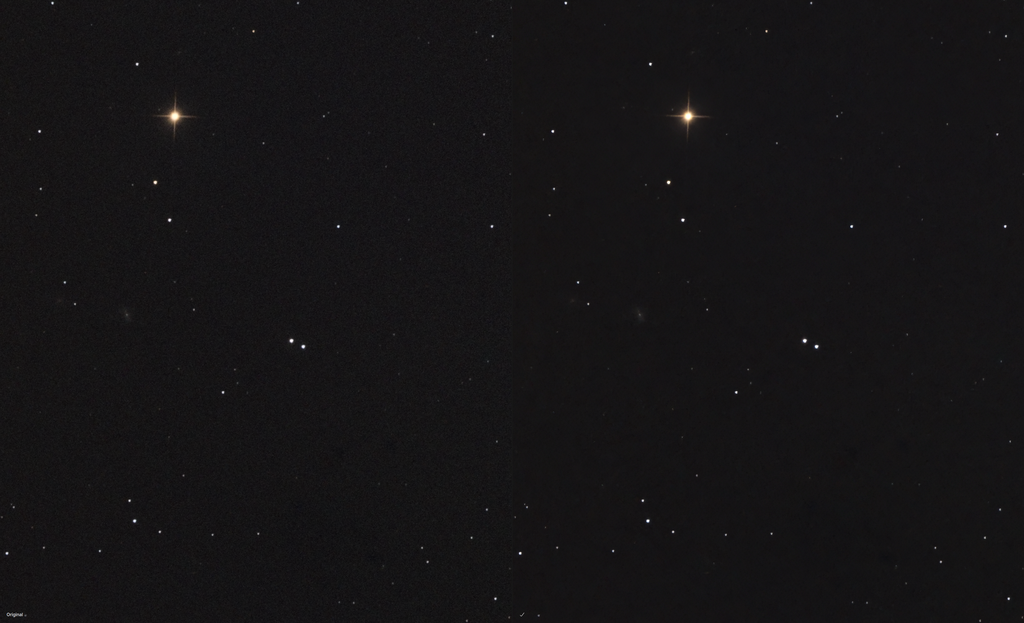 In all three examples it does a pretty poor job of maintaining star shape. And the second example particularly shows some weird artifacts around the galaxy in the middle-left. And this is my friend's image ran through Topaz on its recommended settings. Again left is original, right is denoised, both are 1:1: 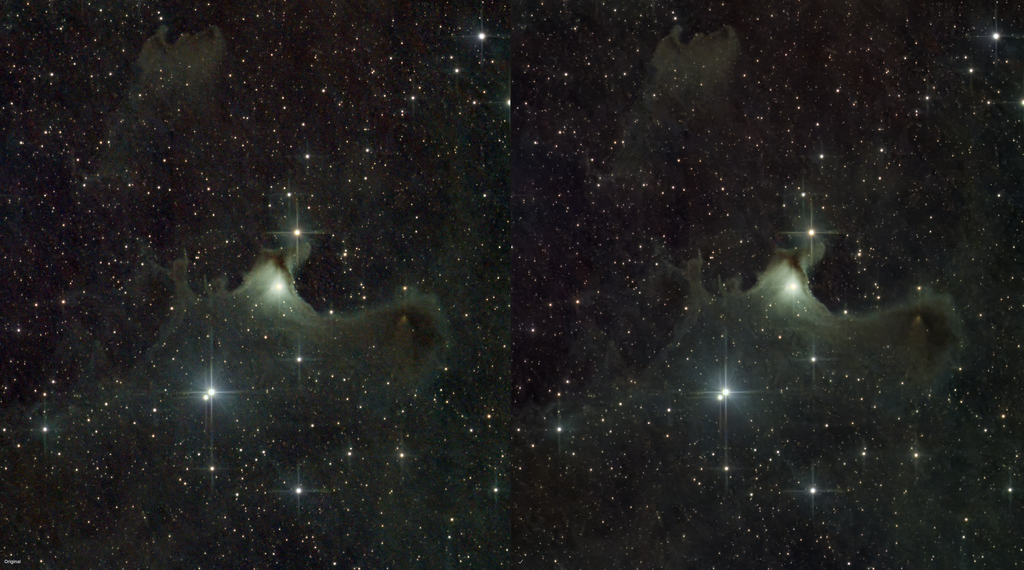 Overall I think Topaz does a bad job with large-scale noise, often misinterpreting it as texture that isn't really there. It also struggles a lot with preserving star profile.
|
You cannot like this item. Reason: "ANONYMOUS".
You cannot remove your like from this item.
Editing a post is only allowed within 24 hours after creating it.
You cannot Like this post because the topic is closed.
Copy the URL below to share a direct link to this post.
This post cannot be edited using the classic forums editor.
To edit this post, please enable the "New forums experience" in your settings.
Older TopazDenoise is fine IF used correctly. It's a brutal tool. The so called "sharpening" is completely unacceptable for me- but that's what masks are made for. It can only be used with starless images, which is fine. The result usually requires blending in in Photoshop, usually with some additional masking. All in all, I value it greatly but it requires a lot of caution and fine-tuning. I suppose this is also the case with the new TopazStudio, or whatever it's called. I'm sticking with the older TopazDenoise, since that works good for me.
|
You cannot like this item. Reason: "ANONYMOUS".
You cannot remove your like from this item.
Editing a post is only allowed within 24 hours after creating it.
You cannot Like this post because the topic is closed.
Copy the URL below to share a direct link to this post.
This post cannot be edited using the classic forums editor.
To edit this post, please enable the "New forums experience" in your settings.













